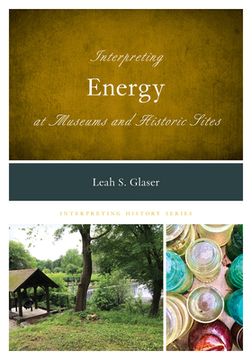Share
Interpreting Energy at Museums and Historic Sites (in English)
Leah S. Glaser
(Author)
·
Rowman & Littlefield Publishers
· Hardcover
Interpreting Energy at Museums and Historic Sites (in English) - Glaser, Leah S.
$ 112.00
$ 140.00
You save: $ 28.00
Choose the list to add your product or create one New List
✓ Product added successfully to the Wishlist.
Go to My WishlistsIt will be shipped from our warehouse between
Tuesday, July 09 and
Wednesday, July 10.
You will receive it anywhere in United States between 1 and 3 business days after shipment.
Synopsis "Interpreting Energy at Museums and Historic Sites (in English)"
Experts all agree that human beings can mitigate climate change by changing how we use energy for heat, light, movement, and production. Stewards of heritage sites and collections can engage the public at the grassroots level to raise awareness about the cultural and socioeconomic reasons for past choices that have contributed to climate change. This book will help cultural institutions identify ways to interpret new stories through historic places and resources, especially if staff have made the commitment to "go green." Without place-based context, discussions about energy focus primarily on the science, and not the human experience. By reminding us of our past practices and values regarding energy production and use, historic places can inspire different ways of thinking about transitioning to different energy sources, and question the doctrine that high energy use is necessary for progress. Public interpretation can expose the vast energy infrastructure and the impact of energy extraction, production and use on place. Historic sites offer place-based contexts for visitors to interact with and think critically about the processes and the impact of energy development in, for example, a maritime village. This book synthesizes science with the humanities outside of popular media and other politicized spaces to identify different kinds of energy resources in many historic collections or sites. It supplements current calls for economic and policy changes, because as stewards of historic places, we need to do what we can in this "all hands-on deck" moment to prepare for shared stewardship of our future.
- 0% (0)
- 0% (0)
- 0% (0)
- 0% (0)
- 0% (0)
All books in our catalog are Original.
The book is written in English.
The binding of this edition is Hardcover.
✓ Producto agregado correctamente al carro, Ir a Pagar.

